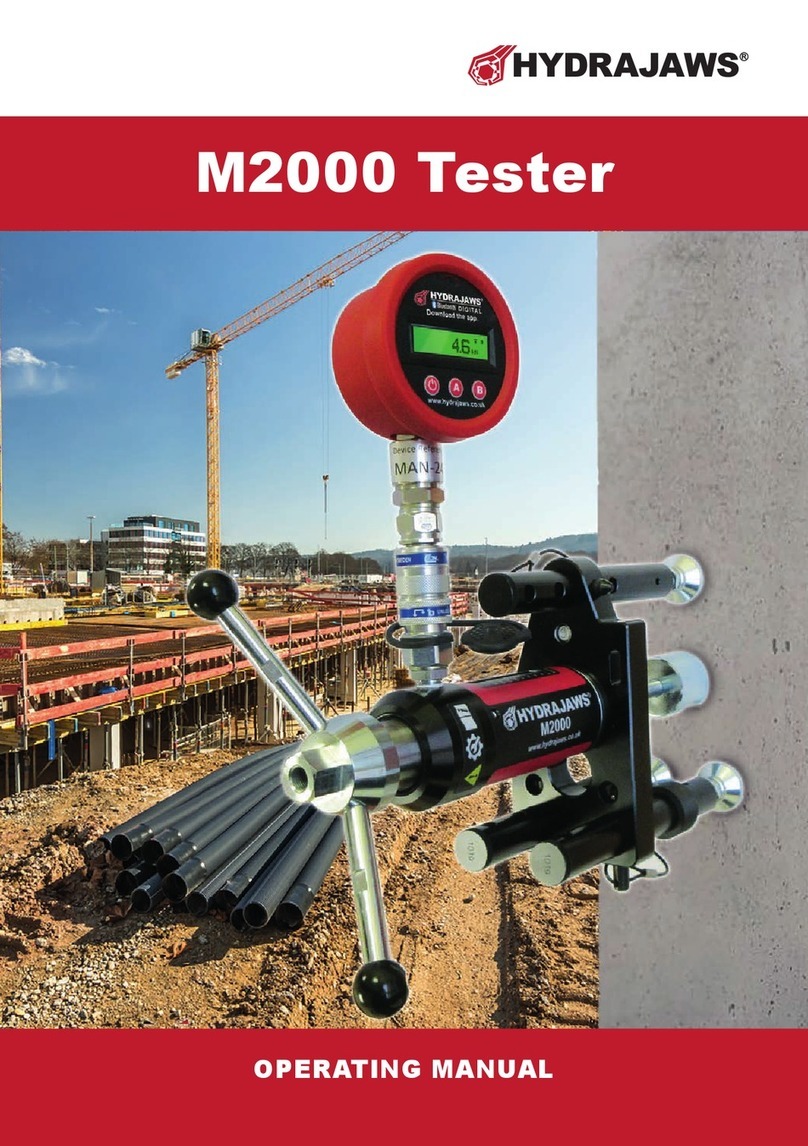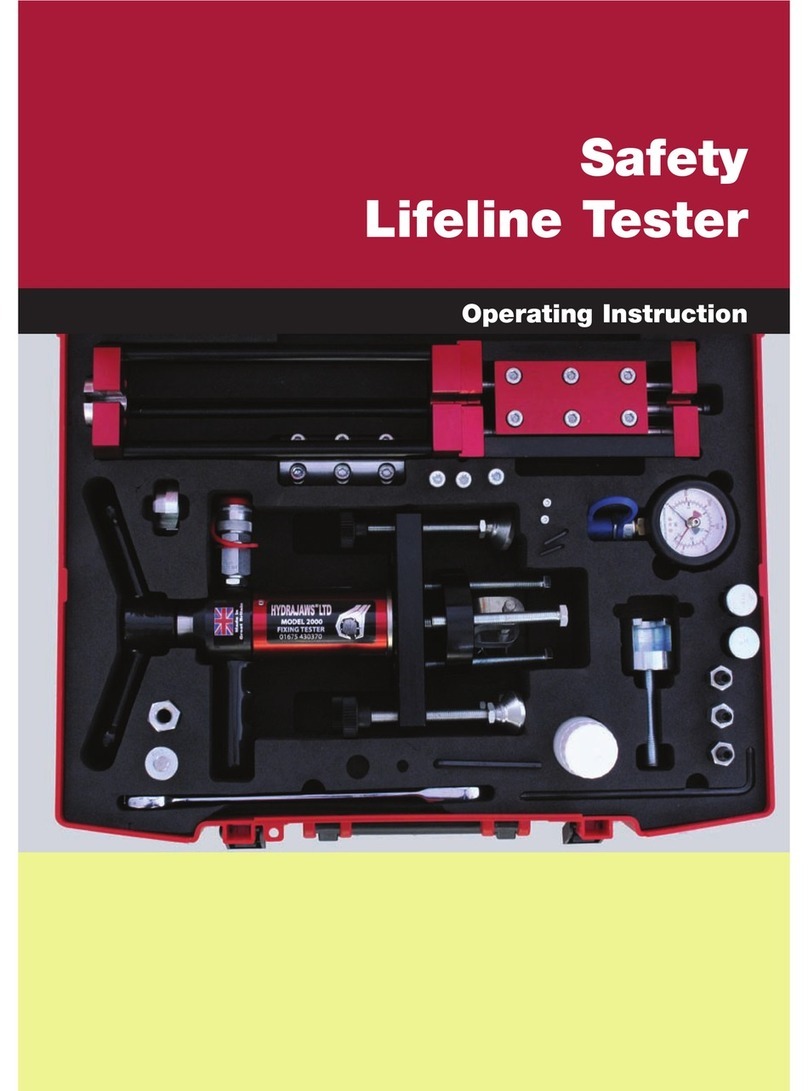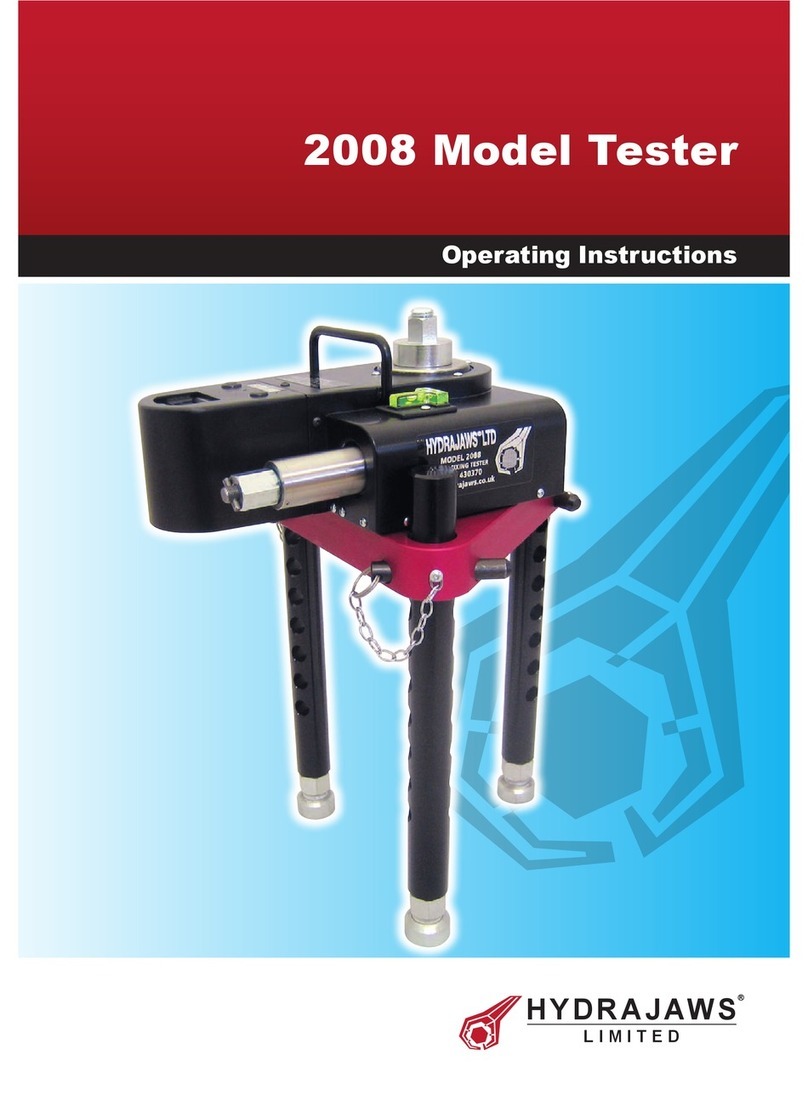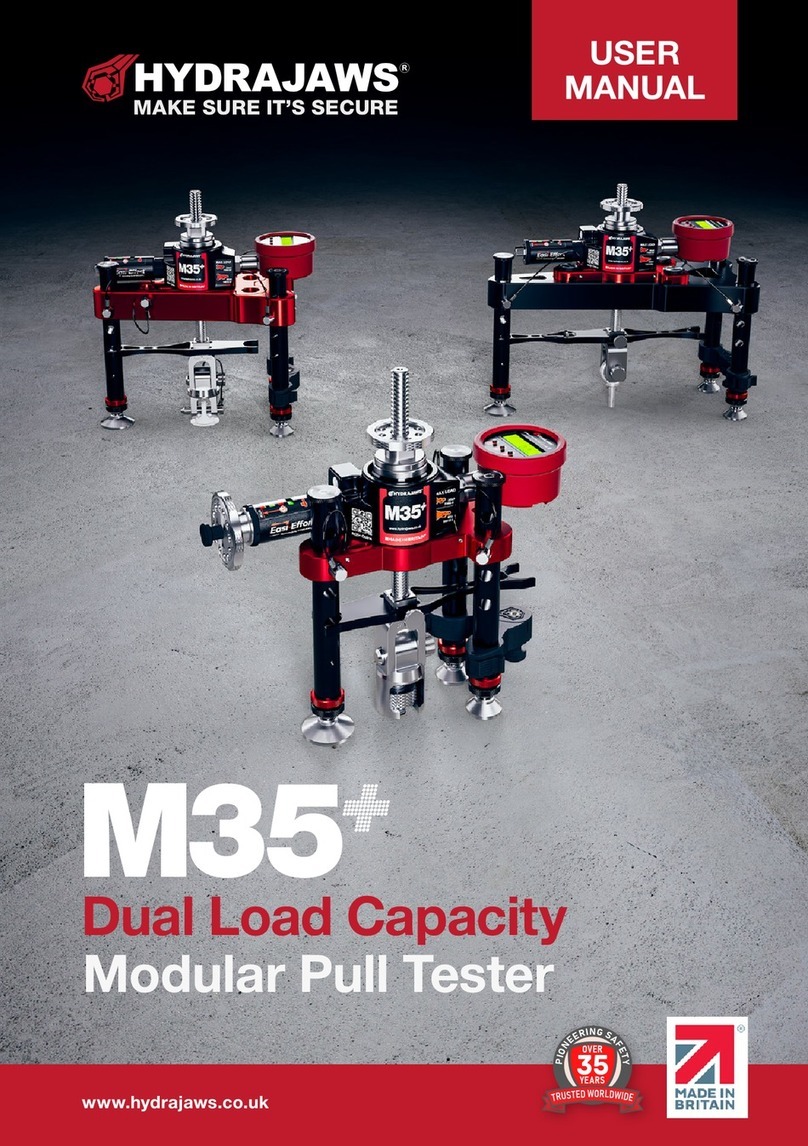76
TESTING PROCEDURE
6. Set the red pointer on the gauge to zero
- hold the tester by the grip handle and
proceedtoloadthefastenerbyturning
the operating handle clockwise (g 5).
7. Increase the load until the required
test load is attained. Hold this load and
observeanyfallingbackofthereadings
which would indicate movement and
possiblefailureofthefastener.Record
thesatisfactoryresult.
8.Releasetheloadonthefastenerby
turning the operating handle anti-
clockwise and allowing the test jaw
to return to the original position.
9. Remove the tester and bolt tester
adaptor.
Fig 5
1. GENERAL TESTING PROCEDURE
SETTING UP THE TESTER
1 Fit the appropriate adaptor to the tester.
Exampleshownisabolttesteradaptor.
(Forttingofotheradaptorspleasesee
individual instructions in this manual.)
2. The tester is supplied with a locking
adaptorttedintothetesterbody.
This locking adaptor can be removed
forttingofdifferentadaptorsbyusing
the 3mm Ball Driver. When replacing
backinensureitisfullyengagedinto
thetesterbodybeforetightening
(g 1). Thread the bolt tester adaptor
intothis,untilitisfullyengaged,using
aquarterturnforposition(g 2).
3.Makenaladjustmentssothatthebolt
testeradaptor,testerandxingare
aligned (g 3).
4. Position the tester so that the gauge
can be easily read.
5.Adjustthelengthofthelegssothat
all three are in contact with the base
material and the load spreading bridge
isalignedandlevelbyreferringtothe
bubblelevelsoneachface.
Fine adjustment is available by
unscrewingthefeetbynomore
thanapproximately15mm(g 4).
Fig 3
Fig 4
Fig 1
Fig 2
It is essential when testing on ceilings
(upside down) and/or vertically, that a
safety line is attached from the eyehook
on tester body to a suitable solid xing
point. This will stop the tester falling and prevent
injury to personnel and/or damage to test unit. If
no suitable xing point is available then attach to
safety harness on personnel using the tester.
CAUTION!
Holdthefastenersecurelybythegrip
handleaslongasthefastenerisunder
load.Whentheloadincreases,note
the reading on the displacement scale
onthetester.Indicationoffailureofthe
fastenermaybeobtainedbycomparing
the current reading with the original
reading.
































